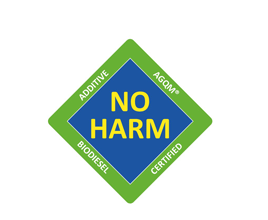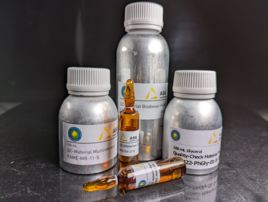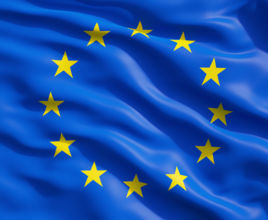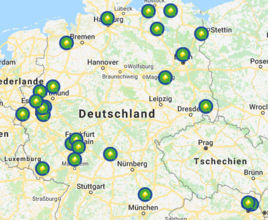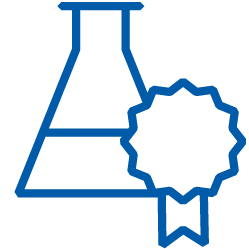
CAS Number
Since many years, the Chemical Abstract Service keeps an extensive register of substances. For their explicit allocation a CAS number is assigned to each identified substance. The CAS number gives the possibility to unmistakably name chemicals next to all common systematic nomenclature systems. It is the largest register of substances worldwide. With the EINECS system Europe has developed a similar system which is based on EC numbers. This register includes around 100.000 substances and is the basis for substance identification in REACh. New numbers can be assigned in the registration process to improve the definition of similar substances. For a better identification of the substances in REACh the CAS number is given as well.
CoRAP – Community Rolling Action Plan
Member states of the European Union evaluate substances in suspected cases to verify if their usage poses a risk for health or environment. EU’s continuing plan of action intends to evaluate chemical substances from different registrations within three years according to their risk with regard to hazardous nature, exposition and total amount of the same substance. Each member state is allowed to suggest substances to be included into the plan of action. If a substance is evaluated as risky, there are special precautions regarding usage and production. CoRAP activities have the same objective as the list of substances of very high concern (SVHC). Both can lead to prohibition and restrictions on the use of substances.
CLP – Classification, Labelling and Packaging of Substances and Mixtures
Protection directive to ensure the safety of health and environment in the European movement of goods (chemical substances, mixtures) by regulation of classification, labelling and packaging, effective from 01. June 2015. The user of chemicals shall be informed about the respective hazard with help of pictograms and standard phrases in the labeling and material safety data sheets. CLP is the European equivalent to the Globally Harmonized System (GHS) initiated by the UNO for globally standardized labelling of chemicals.
Consortium
A new REACh registration along with necessary studies (e.g. mutagenicity, generation test) is very expensive. To prevent that only one company has to bear the whole financial burden and to secure that all typical applications are taken into account, interested companies merge into a consortium. Within this consortium the arising expenses are split in an equitable way. There are no additional statutory specifications according to the functioning and legal form of a consortium. It can deal with one or more substances and can also operate - according to the agreement - as SIEF or part of a SIEF.
CSR – Chemical Safety Report
The Chemical Safety Report (CSR) shows the result of a comprehensive Chemical Safety Assessment (CSA). In standardized tests the physico-chemical, toxicological and ecotoxicological properties of a substance are examined. In a REACh dossier the structure of a CSR is prescribed strictly. The CSR is part of an IUCLID substance dossier as independent document.
ECHA – European Chemicals Agency
Institution for organization and control of REACh and the CLP Directive at European level, founded in Helsinki Finland in 2007. The market surveillance of compliance of these provisions applies to the responsible authorities of the EEA member states.
Exposition Scenario
Compilation of conditions to constitute how a chemical substance is produced or used during its life cycle and how the supplier or user is able to limit the exposition of humans and environment. Exposition scenarios include recommendations how to handle the respective substance in typical applications.
Extended Material Safety Data Sheet
A Chemical Safety Assessment (CSA) has to be done if an amount of more than ten tons of a chemical substance is produced or imported per year. If the assessment shows that there is a hazardous substance, the relevant exposition scenarios have to be attached to the material safety data sheet.
Inquiry Procedures
To register a substance at ECHA a registration dossier has to be submitted. Registration dossiers will only be accepted, if the identity of the substance is confirmed. As alternative the pre-registration of a substance is approved. When the time of a pre-registration (incl. late pre-registration) has passed, the identity of the substance has to be explicitly proved towards the ECHA by an inquiry procedure. For this purpose a dossier that includes all information necessary for an explicit identification of the substance (analytical results, technology descriptions, range of composition etc.) has to be submitted. After successful conclusion of an inquiry procedure the registrant receives an inquiry number for the proposed substance.
Lead Registrant
The REACh Directive orientates on a Joint Submission. For this purpose, the Joint Registration Dossier with all general information of the substance is submitted by only one registrant. This Lead Registrant operates in agreement with the other registrants. The registration dossiers of the other companies including company-specific information can be accepted only if the dossier of the Lead Registrant was accepted. The nature of the registration fees favors companies who submit their dossier within a Joint Submission. However, for the companies there is a possibility of a fee-based opt-out from a Joint Registration. The opt-out can affect the whole dossier or parts of it.
LoA – Letter of Access
The permission to use one or more studies for the REACh registration or name it as a reference is called Letter of Access. The rights of use have to be purchased from the Lead Registrant or the Data Owner. Additionally, the permission of a SIEF member to obtain the whole Joint Submission (all studies used for the Joint Submission) for a certain amount is also considered as Letter of Access. LoAs are usually subject to a charge and shall cover the expenses for data acquisition.
Placing on the Market
Submission or provision of substances to a third party against payment or free of charge. Production or Import are included as well.
REACh – Registration, Evaluation, Authorization and Restriction of Chemicals
European Directive for Registration, Evaluation, Authorization and Restriction of Chemicals. All companies placing chemicals (> 1t/a) on the market within the European Union have to own a REACh registration from ECHA for each substance.
REACh lead to a significant standardization of the Chemicals law in the EU member states. It is an effective means to improve the safety dealing with chemicals.
REACh-IT
Central IT system of ECHA which includes the official web side, web applications and deposited data base. Via an interface all REACh relevant data are entered and all notifications, decisions and correspondence are managed. For some time, in REACh-IT a delivery fiction is implemented so that all messages from ECHA are classified as delivered after 7 days regardless of whether the message was actually read or not.
Registrant
Producer or importer of a substance/product who submits a registration dossier for a substance. With the acceptance of a dossier the registrant receives a registration number (sometimes called REACh number) for the substance.
Registration
Has to be carried out when more than one ton of a chemical substance (within the REACh scope) is produced or imported per year. Depending on the tonnage there are different deadlines to which the substance has to be registered. For the registration a technical dossier has to be created including the basic properties of the substance, the classification and labelling as well as the application and guidelines for a safe handling. From a production volume of more than ten tons per year a Chemical Safety Report is needed. If a substance has no registration and the deadline has expired it may not be produced or imported.
SDS - Safety Data Sheet
Information sheet about a hazardous substance or mixture with a prescribed structure. The SDS includes all information to protect health and environment on a necessary level as well as recommended measures to minimize damage caused by accidents with chemicals or their unintentional release. Furthermore, REACh demands a substance information for non-hazardous substances. For this document there are no defined requirements from the legislation but in practice it has paid off to provide the information in the structure of a SDS for these substances as well (also called optional SDS).
SIEF – Substance Information Exchange Forum
Forum for exchange of substance specific information, studies and recommended actions. Moreover, the classification and labelling of substances shall be discussed if there are differences in their assessment by potential registrants. With the pre-registration and a successful inquiry procedure the potential registrant automatically becomes a member of the pre-SIEF for the respective substance. Potential registrants are requested to structure their cooperation in SIEF independently with respect to the REACh Directive. Administrative interventions are only performed on exception, e.g. if the order for fair data sharing is violated.

